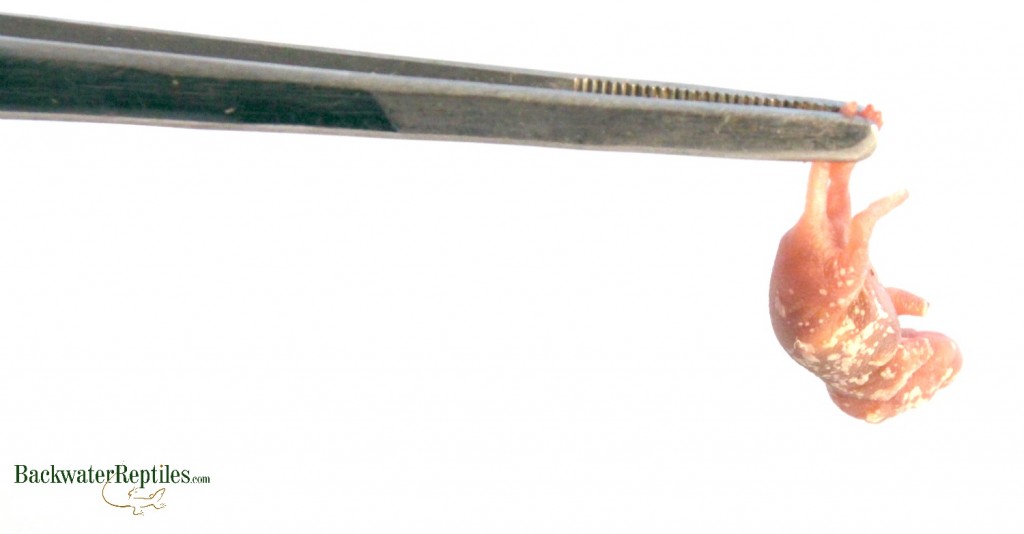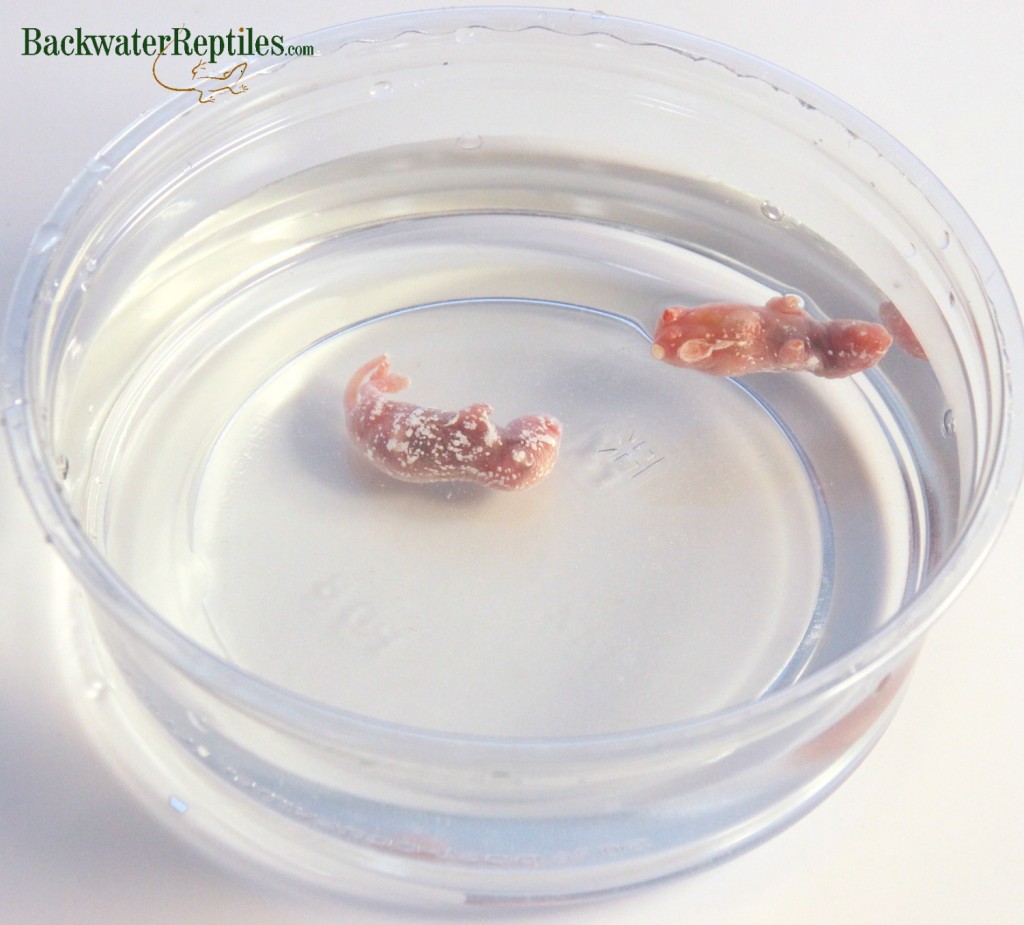At Backwater Reptiles, we sell snakes of all sizes ranging from tiny Ringneck Snakes to giant Green Anacondas, so we have lots of experience feeding and maintaining the health of these animals.
In this blog article, we’ll answer these three commonly asked questions regarding snake feeding habits:
-What do I feed my pet snake?
-How do I feed my pet snake?
-Should I feed my snake live rodents or use frozen/thawed ones?
What do I feed my pet snake?
First off, we should mention that nearly all snakes eat mice, rats, or other small vertebrates in captivity. The smaller the snake, the smaller the prey item.
Most hatchlings will start off with pinkie mice and eventually grow into being able to eat fuzzies. Only the larger species of snakes such as anacondas, pythons, and boas to name a few, will get large enough to the point that they require full-grown mice as meals. We recommend doing your research if you don’t want to have to handle full-grown feeder animals.

Some smaller species of snakes will not need to eat rodents. For instance, the Ringneck Snake is so small that it eats night crawlers in captivity. Garter and Ribbon Snakes can eat mice, but will actually do quite well on a diet of minnows or other small feeder fish, and even nightcrawlers.
Feeder rodents of all sizes can be purchased at most pet stores. Backwater Reptiles also offers feeder mice that are conveniently delivered to your door step, as well as nightcrawlers.
How do I feed my pet snake?
If you feed your snake frozen mice, then the first step is to thaw the frozen rodent. After removing the feeder animal from your freezer, place the animal in warm water for a few minutes. Allow it to de-frost and thaw like you would a cut of meat. Because most feeder rodents are very small (especially the pinkie mice), it shouldn’t take more than five to ten minutes to thaw the food.

NOTE: Do not EVER put the frozen rodents in the microwave. Not only will you have a mess to clean up, but you will have wasted perfectly good snake food.
Once you are sure your feeder rodent is sufficiently warmed, remove your snake from its enclosure and feed it in a separate, temporary enclosure. This need not be a large or elaborate container – just something tall enough so that the snake won’t climb out during the feeding process.
The reason we advise moving your snake to a separate feeding tub is to prevent your snake from becoming aggressive. If you feed the snake inside its own cage, it will assume that every time the cage is opened, food is coming, which could lead it to “train” itself to strike whenever the cage is opened. In other words, it will associate the cage opening with food instead of bath time, cage cleaning time, or even play time. Moving the snake to a separate feeding area will help counteract this type of behavior.
Once your snake is in its feeding enclosure, simply hold the rodent out for the snake to strike at or drop the rodent into the enclosure in front of the snake. You can also use tongs to hold the prey item in front of the snake’s line of vision.
If you feed your snake live prey, we highly recommend stunning the animal before putting it in the snake’s enclosure. This is because feeder animals can actually scratch and bite the snake before the snake has time to consume it. This can lead to infections or even unsightly scars on the snake’s body.
Should I feed my snake live rodents or use frozen/thawed ones?
We highly recommend using frozen/thawed feeder rodents when it comes to snakes for two main reasons – safety and convenience.
It might not seem like a big deal, but as we previously mentioned, living feeder animals can actually harm snakes. Rodents are sneaky and will do everything they can to outsmart a snake. They will bite and claw the snake if it hesitates at all. This can be a problem is your pet snake is a slow eater or if it is not hungry when you feed it. Again, you don’t want your snake to be injured by its food.
We also think that it’s safer for you, the snake’s owner, to feed it frozen food. It has been said that snakes becomes more aggressive when fed live food and we agree. While there’s not really any definitive proof that this is true, it does seem to be the case in our experience.
Snakes that are given live food have to strike to kill and usually will have to strike more than once to catch the animal they’re eating. It just makes sense that the snake will be more likely to strike if it is practicing this behavior on a regular basis.
We also feel that feeding frozen animals to your snake is more convenient. If you opt for feeding frozen/thawed, you can simply keep the food in your freezer until your snake’s meal time. On the other hand, if you feed your snake live food, you either have to keep living feeder rodents at your home or go to the pet store once per week to obtain them.

Conclusion
Feeding your pet snake is a fairly simple process, whether you opt for frozen meals or live prey. It’s honestly as simple as thawing your feeder mice or stunning your live prey and offering it to your snake. Nature does the rest.
